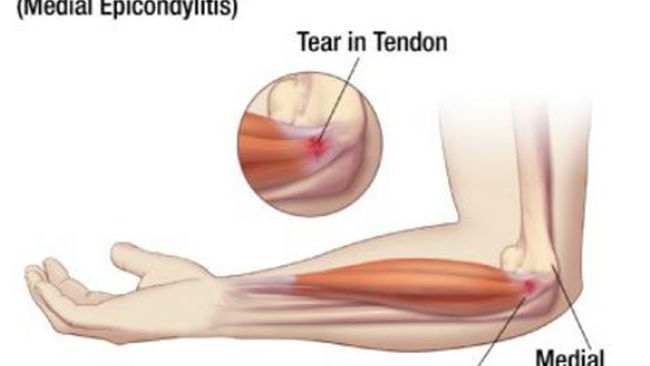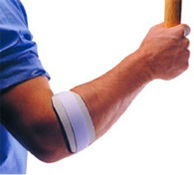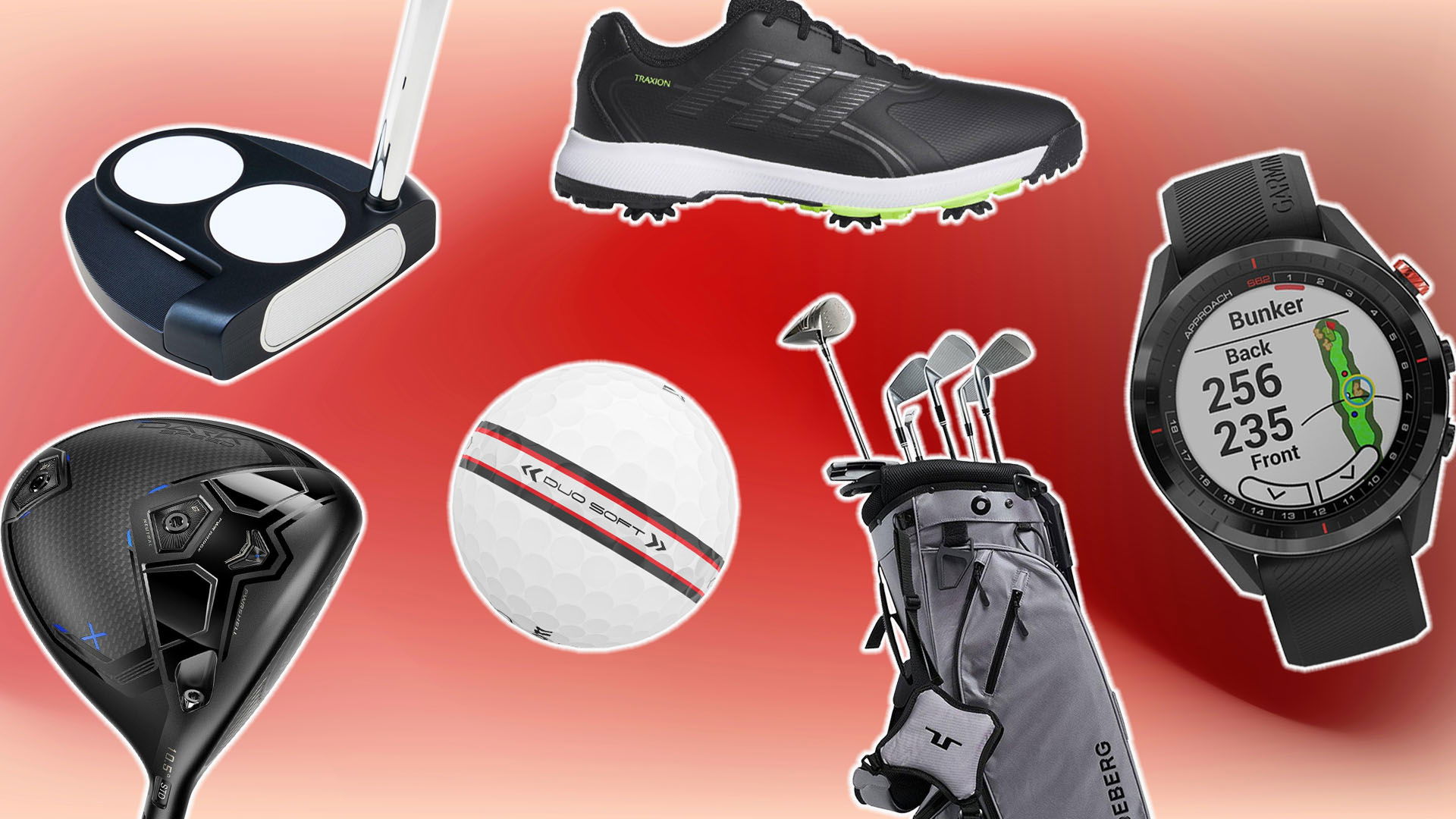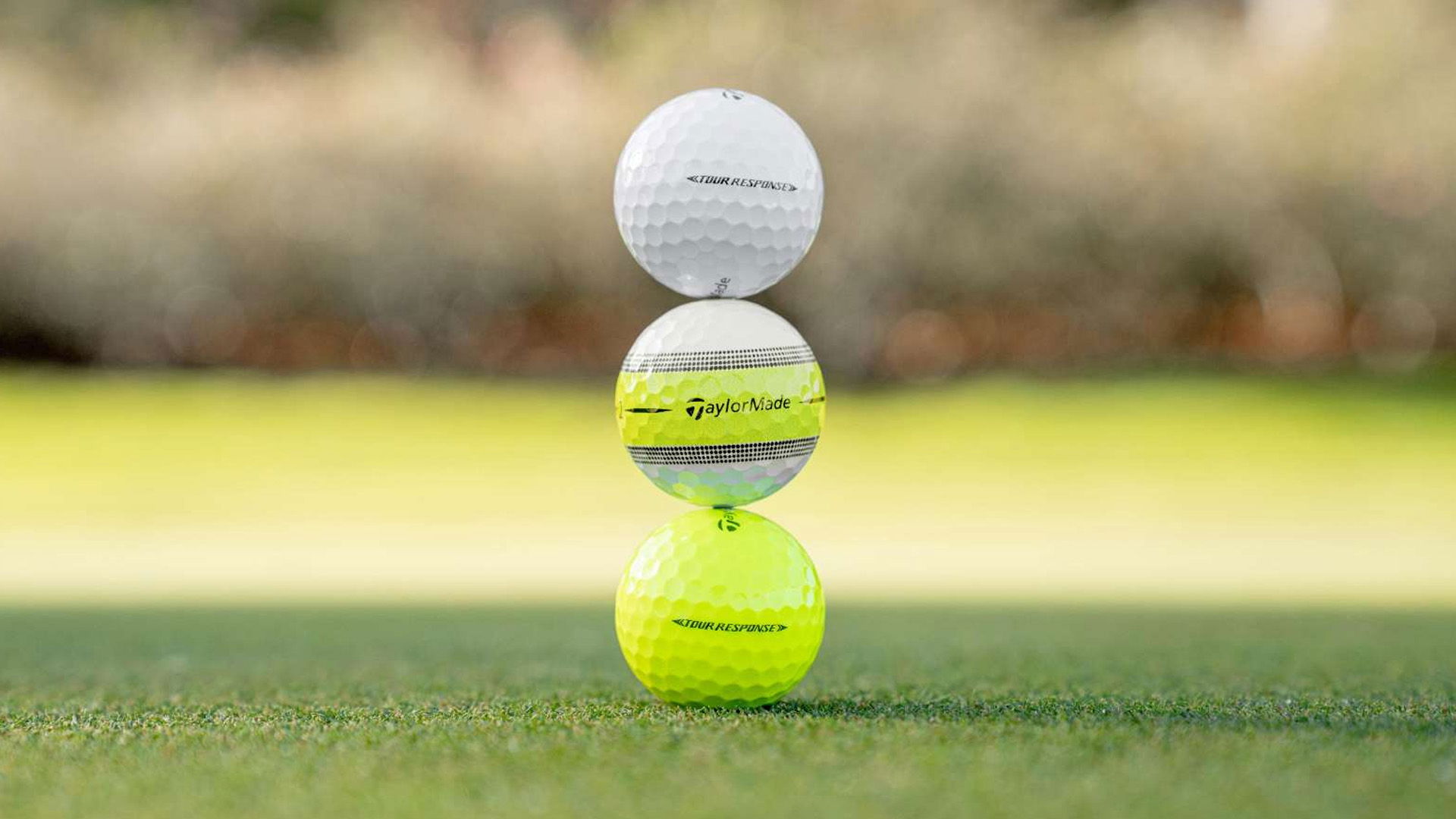The scourge of 'golfer's elbow'
Many of us suffer it when our golf is at its most intense

As golfers, we're more likely to be susceptible to the risk of injury at this time of year than at any other. Inactivity because a mixture of rain, snow and ice closing courses means that when the opportunity arises to play at last, our bodies may not quite be ready to function as we'd like. While the reduction of golfers on courses, reduces the likelihood of being hit by a stray ball, we're nevertheless likely to suffer twisted or broken ankles because of slippery ground conditions as well as over stretching and exposing ourselves to wrist, elbow, shoulder, back and neck strains. One of the most common injuries golfers suffer, is appropriately called Golfer's Elbow - not a fault in our swing to be confused with the 'flying elbow', but a form of tendonitis ( medial epicondylitis), similar to its counterpart, tennis elbow (lateral epicondylitis). The main difference is the location of the pain and the activities that cause the injury. But both conditions are caused by overuse of the muscles and tendons of the forearm, which leads to inflammation and pain around the elbow joint. Golfer's elbow tends to be restricted to the inside of the elbow, the tennis version to the outside joints. | |
The sensation is a shooting pain down the forearm while gripping a club or racket handle. Tendons are the ends of muscles that attach to bone and because of the force of the muscle, the points of insertion of the tendon on the bone are often pointed prominences. Inflammation here causes the pain. How we sustain this particular injury can vary. It can be a single violent action - trying to get a little more distance from a driver or extricating a ball from a particular tough and deep lie. More commonly, however, it's a repetitive stress or strain, where an action is performed repeatedly (and possibly incorrectly in our golf swing) and pain gradually develops. | |
Many of us suffer from these injuries (a frustrated colleague has currently been out of the game for 11 months but close to full recovery), but they are most common at the beginning of the golf season when our golf suddenly increases in intensity and duration. Golfer's elbow, thankfully does not cause any long-term disability and it's treatment is rarely surgical. It may be hard to swallow but rest and proper rehabilitation are the ideal cures. | |
Among the top players who have suffered with Golfer's or tennis elbow are Howard Clark, Padraig Harrington and Miguel Angel Jimenez. For Clark it effectively ended his career and despite his Sky Sports golf commitments, he rarely plays. For Harrington and Jimenez they have managed to control it by wearing a tell-tale support brace on the affected forearm. While at the first sign of pain in this area you should consult your doctor, other ways to keep the pain at bay include a change in technique, custom-fitted grips, anti-inflammatory medications or as a last resort, a course of cortisone injections. Some simple stretches and exercises can also help control the symptoms of golfer's elbow, once pain has subsided. By strengthening the muscles and tendons involved, you can help prevent the problem from returning.
BioFreeze is currently hosting a national survey about the sports that young people pursue and each registered vote enters a draw for the chance to win £500 worth of sports equipment. |
What is it?
The condition is called golfer's elbow because in making a golf swing the tendon is stressed, especially if a non-overlapping (baseball style) grip is used.
In most cases, its onset is gradual and symptoms often persist for weeks before patients seek care. Pain is felt on the inner side of the elbow where your forearm muscles attach to the bony bump on the inside of your elbow but the pain may spread into your forearm and wrist.
The condition is similar to tennis elbow although pain is felt on different sides of the arm.
If you're struck by this frustrating ailment you will join a long list of prestigious prefessionals who have also suffered, includuding Migel Angel Jimenez and Vijay Singh.
Treatment?
Normally rest, ice, compression and elevation (RICE) is enough to cure the condition although in some rare cases more drastic measures need to be taken.
Steroids may need to be injecteed into the elbow if RICE and taylored exercises do not work and in the most extreme cases, surgery may be needed.
Products
Compression straps can be found at various retailers and also at Amazon
Freeze spray will act instantlty to ease pain and is available at Boots
A pain releaving gel can releive sore joints and is available at The Physio Room
Article originally published in 2007, updated by Charlie Lemay in May 2013.















